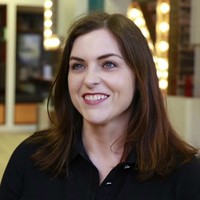There’s very rarely a silver bullet in business. Success comes from a combination of factors. Operations, marketing, customer service, order fulfillment, brand, and market conditions all contribute to the bottom line.
But there’s one thing that the most-loved customer experiences all seem to share — simplicity.
Simplicity inexperience makes a proven impact
The Simplicity Index, created by Siegel+Gale, is a yearly ranking of brands with the least complicated experiences. The consultancy’s research has drawn some compelling conclusions about the impact of distilled experiences:
- Simplicity drives love: 64% of consumers are more likely to recommend a brand because of simple experience.
- Simplicity drives growth: Since 2009, a stock portfolio made up of the simplest publicly-traded brands (as defined by Siegel+Gale) has outperformed the market by 686%.
- Simplicity drives sales: 55% of consumers are willing to pay more for uncomplicated experiences.
The brands that set the bar for simplicity
Although they ranked dozens of brands, Siegel+Gale’s top three were diverse, successful, and unsurprising:

Source: Google Images
1. Netflix
“Whether you’re vegging out at home or aboard a cross-country red-eye, hosting your own personal Bill Murray retrospective or rewatching all 10 seasons of Friends is as easy as reaching a device, opening an app, and pressing Play. The platform takes ease of experience one step further, with algorithms that track your viewing patterns, eliminating the arduous decision-making process of what to watch next.”

Source: Google Images
2. ALDI
“With ‘easy-to-use’ stores and ‘direct and helpful’ information, ALDI understands the real path to its shoppers’ hearts is a stress-free, no-frills shopping experience. People credit the German brand for helping them ‘save time’ as well as its ‘reasonable prices.’ Simple, consistent floorplans plus uncomplicated offers, high-quality products, and excellent customer service, proves that ALDI is determined to give value back to its loyal customers.”

Source: Google Images
3. Google
“While it’s a radically different world since its launch 20 years ago, Google hasn’t strayed from its original mission. The tech industry may have faced scandals over the past year, but the universally ‘accessible’ brand soldiers on, pushing the boundaries of available technologies to organize the world’s information.”
When describing how other brands can learn from the market leaders in simplicity, Philip Davies, the Europe, Middle East, and Africa (EMEA) president at Siegel+Gale, says:
“We live in a complex world where people are increasingly busy and constantly bombarded with information. They shop and consume information on the go, whether it’s during their morning commute or evening stroll. This reality means brands that develop a clear offering that is easily understood and that consistently deliver a simple, seamless experience are one step ahead of the competition.”
But what do we mean when we say “simplicity”?
Calling something simple is like calling it beautiful — the specifics can be hard to nail down, and what’s simple to one person might be complicated to another. But in Siegel+Gale’s research, there are three basic tenants that all of these brands share:
- Get the basics right: All of these brands deliver on their basic promise. They don’t confuse customers with hundreds of combinations of offers; they deliver what customers came for quickly and easily. ALDI gives you a low-cost, low-brand grocery experience — even if they offer caviar once in a while, they do it at bargain-basement prices without frills, bought from a cardboard box on a metal shelf and the fastest cashiers in the world.
- Provide tangible value: No customer cares if you offer a simple experience but don’t provide something they need. Each of these simple brands is a master at building products and services that customers are willing to buy, repurchase, and recommend to their friends.
- Keep the experience transparent: The best of these brands offer something unique. Their simplicity is tied with honesty. They don’t confuse with value bundles, rely on random and radical promotions, or hide their pricing. When you subscribe to Netflix, there’s no doubt that you’ll get exactly what you paid for: a streaming service that just works. They may raise their prices, but they’ll never have blackout periods for comedies or charge overages for binging The Office. Netflix is upfront about its cost to value tradeoff.
The science behind the simplicity and why it works
The underlying behavioral psychology of why uncomplicated CX is so appealing is called (aptly enough) the Simplicity Theory. This rule states that people have a bias toward simplicity and are predisposed to choose products and experiences that minimize their cognitive load.
John Collard of Yale University says, “Not only is it hard work to think, but many people fear the activity itself. They are docile and obedient and easily follow suggestions put forward by others because it saves them the labor of thinking for themselves.” In other words, people don’t want to think too hard about your customer experience because thinking is hard work. They’d rather just avoid an experience altogether if means less thinking is involved.
People don’t want to think too hard about your customer experience because thinking is hard work.
Putting simplicity in practice, however, can be difficult to achieve. Embedded processes, established ways of working, middle managers looking for ways to justify their roles, organizational structure, and lack of market orientation all make it difficult to create simple experiences.
As Dan Gingiss put it in Forbes, “Simplicity is a basic tenet of customer experience, but it is often overlooked in favor of a company’s outdated rules or procedures.”
Three books that can get you on track for building a simple customer experience:
- Insanely Simple by Ken Segall: “Simple can be harder than complex. You have to work hard to get your thinking clean to make it simple. Steve Jobs’ obsession with simplicity is what separates Apple from other technology companies. It’s what helped Apple recover from near death in 1997 to become the most valuable company on Earth in 2011 and guides the way Apple is organized, how it designs products, and how it connects with customers. It’s by crushing the forces of complexity that the company remains on its stellar trajectory.”
- The Laws of Simplicity by John Maeda: “Finally, we are learning that simplicity equals sanity. We’re rebelling against technology that’s too complicated, DVD players with too many menus, and software accompanied by 75-megabyte ‘read me’ manuals. The iPod’s clean gadgetry has made simplicity hip. But sometimes we find ourselves caught up in the simplicity paradox: We want something that’s simple and easy to use, but also does all the complex things we might ever want it to do. In The Laws of Simplicity, John Maeda offers 10 laws for balancing simplicity and complexity in business, technology, and design — guidelines for needing less and actually getting more.”
- The Power Of Simplicity by Jack Trout: “Renowned marketing expert and bestselling author Jack Trout has a message for managers who are struggling to keep up with today’s ever-changing business climate: ‘Keep It Simple.’ Trout advocates the importance of paying attention to the basics and simplifying processes in order to stay focused on the core business at hand. Through case studies and interviews with successful executives, he shows managers how to cut through the jargon, articulate their vision, and regain control of the vital elements of their business in order to make it thrive.”








